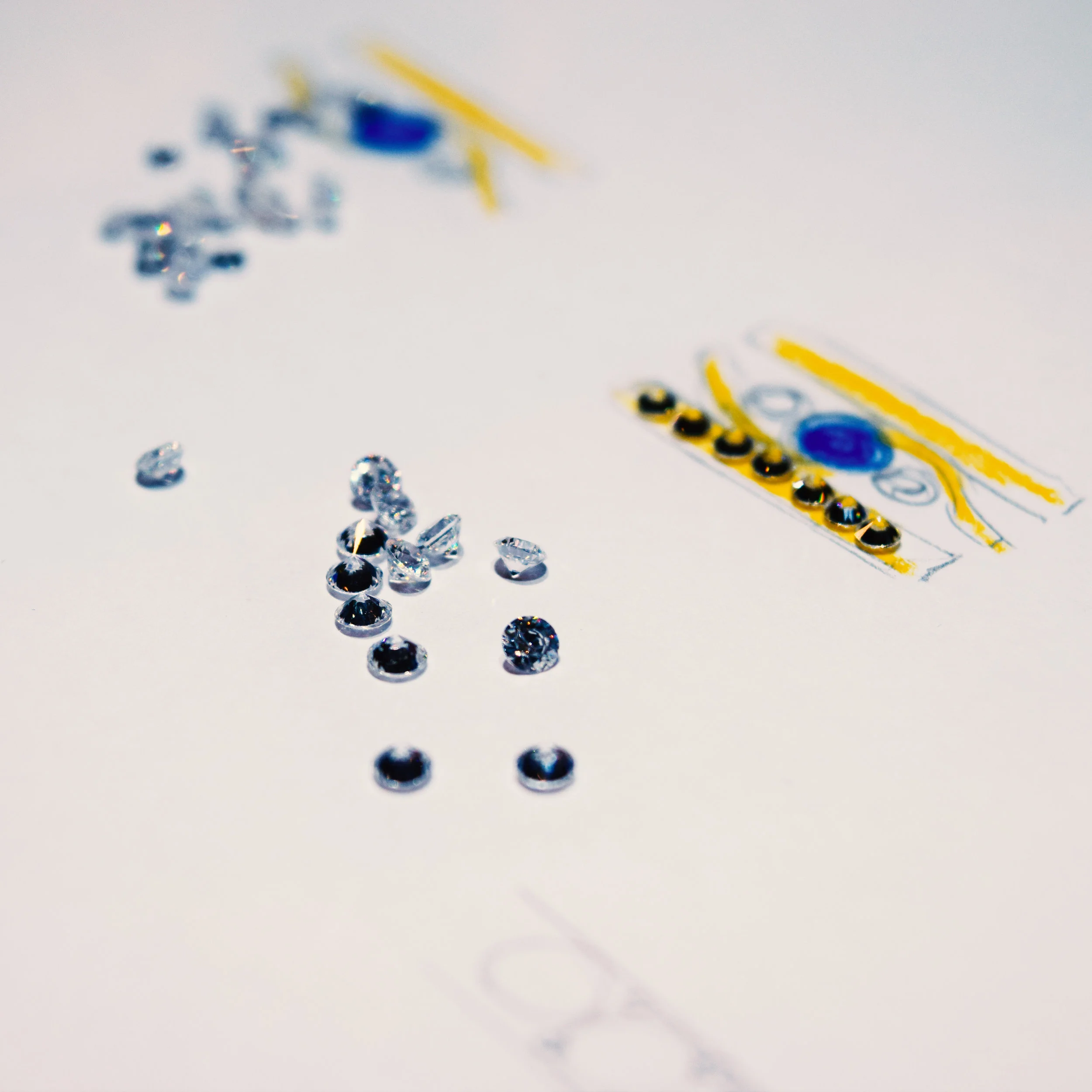Diamond
The diamond is the hardest mineral on Earth. This, combined with its exceptional lustre and brilliant fire, has made it the most sought after gem. Pure, colourless diamonds have never gone out of fashion, either in the form of engagement rings or other varieties of sparkling jewellery. However, it does appear in other colours ranging from yellow, brown, green, blue, pink, red, grey and black depending on the impurities present.
Because of the uniform arrangement of carbon atoms, diamond crystals are well-formed, meaning that when presented in a brilliant cut the stone features an explosion of colour. It’s a stone so unique it can only be polished by others of its kind.
Common Cuts
Diamonds were first cut to improve their look in the 13th century. The chosen style was a basic table cut, with only a few simple lines and a large square window at the top. The cutting wheel appeared later in the 1400s which granted the diamond its more characteristic rounded outline.
The rose cut was widely used during the early 1600s due to its economical properties, allowing the cutter to keep the bottom flat and the top rough with little wastage. At the end of the 17th century a Venetian cutter, Vicenzio Peruzzi, created what is now known as the old cut. This style became quickly popular as its fifty-eight facets gave the diamond a life and fire previously unseen in the stone.
The modern brilliant cut however wasn’t introduced until 1919, and is still considered today the ideal cut for a diamond. It makes most of the gem’s naturally strong light dispersion, resulting in a tremendous brightness and sparkle.
Any other cuts than the brilliant cut, such as baguettes, pear shapes, heart shapes and marquises, falls under the umbrella term fancy cuts.
The Four c’s and other factors
Unlike a lot of other gemstones, diamonds are graded on a rigours system which guarantees its quality and value. The four main characteristics to keep in mind when selecting a stone of a certain size are clarity, colour, cut and, of course, carat. The first three combined will determine the overall appearance of your stone for either the better or the worse. Another few elements to keep in mind is florescence, polish, proportions and symmetry.
We know, its a lot to take into account, which is why we only stock diamonds of the highest quality. If you’re interesting in learning more about diamonds, pop by the shop one time and we can sit down with you, show you stones with varying qualities, and teach you how to spot the clearest and most brilliant of them all.
PS: If this is for a proposal, you can then officially declare you handpicked the diamond that went into the ring!
Sources:
Judith Crowe, The Jeweller's Directory of Gemstones (London: A&C Black, 2006)
Cally Hall, Gemstones (London: Dorling Kindersley, 1994)
Jaroslaw Bauer and Vladimir Bouska, A Guide in Colour to Precious & Semiprecious Stones (London: Octopus Books, 1983)



